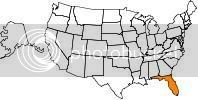...This also works great for me at the intersection approach, when I'm almost at the end of the stop. I guess I got used to using too much front brake, too late, and would come into the stop with too much front shock compression and would feel the rebound crank me back at the end of the stop. Duh! Only 185000miles on bikes and I'm still learning to stop.
Thank you for the tip. I don't find myself having to do tight U-turns very often, and I will often prefer to paddle-walk the bike instead of test my skills and drop the bike. But I will try your tip and try not to tip over...

I do find that when I'm in tight traffic, like in San Francisco trying to get out of town at rush hour, I will use a lot of accelerator while feathering the clutch and dragging the back brake.
But the main reason I'm responding to this post is because, after about 28,000 miles I'm still challenged by the deceptively simple task of smoothly and consistently coming to a full stop at a light or stop sign without bobbling the bike. I think I can actually come to a dead stop from speed, like in rapid-braking practice, better and more consistently than I can when day-to-day stopping from a slow approach.
I would try to slow down using constant decreasing acceleration, down shift to first, hit the last bit of brake to bring the bike to a complete and somewhat abrupt stop at the white line, and then try to casually put my left foot down. But I would always bobble the bike and dab my foot at the ground, sometimes my right foot because of the balance going in the other direction. I believe I learned the technique I had been using when I took the basic safety class, when the instructors were telling us to approach the stopping points with greater speed and more aggressive braking, while of course looking up and forward. Anyway, not being able to do in a consistent way what appears to be a simple maneuver is frustrating....! :angry: a
But I think I may have hit on a technique that let's me be smooth and consistent when coming to a stop at a light, something I've only been doing for the past couple of weeks. What I'm doing now puts into practice the practice you do at the basic and advanced riding courses, namely, seeing how slow you can move forward using a lot of revs while feathering the clutch. What I've been doing now to good success at lights and stop signs is slowing sooner and dropping the bike into first 10 or 15 feet from my stopping point, then, using throttle and clutch, moving the bike very slowly in first to my stopping point. Using this technique, I move so slowly, that coming to a complete stop and putting my foot down is quite simple and consistent.
I think this approach has the added benefit of getting me into first gear sooner and alerting cars behind me to slow down while I still have escape room ahead (and I'm in the right gear if I need to move quickly) if the car doesn't slow in time. I also think this is a smoother technique for when you have a passenger.
Anyway, I'm very happy with this technique, and am still refining it, working on not jabbing at the brake at the last second, but squeezing it.
Jb





